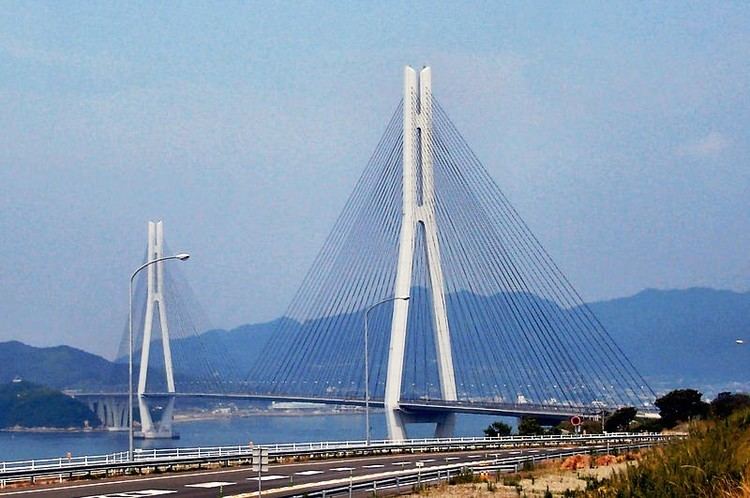Width 30.6 metres (100 ft) Height 226 m | Design Cable-stayed bridge Opened 1 May 1999 Total length 1,480 m | |
 | ||
Carries 4 lanes of roadwaybicycle/pedestrian lanes Address Japan, 〒722-2403 Hiroshima Prefecture, Onomichi, 瀬戸田町 Similar Kurushima‑Kaikyō Bridge, Ikuchi Bridge, Innoshima Bridge, Omishima Bridge, Hakata–Ōshima Bridge | ||
shimanami kaido tatara bridge ehime hiroshima japan paramotor trip
The Tatara Bridge (多々羅大橋, Tatara Ōhashi) is a cable-stayed bridge that is part of the Nishiseto Expressway, commonly known as the Shimanami Kaidō しまなみ海道. The bridge has a center span of 890 metres (2,920 ft). As of 2010 it has the fourth longest main span of any cable-stayed bridge after the Sutong Bridge. The expressway is a series of roads and bridges that is one of the three routes of the Honshū-Shikoku Bridge Project connecting the islands of Honshū and Shikoku across the Seto Inland Sea in Japan. The Kurushima-Kaikyō Bridge is on the same route.
Contents
The bridge, which opened on May 1, 1999, carries two lanes of traffic in each direction and has additional lanes for bicycles, motor bikes, and pedestrians.
The Tatara Bridge was originally planned as a suspension bridge in 1973. In 1989, the design was changed to a cable-stayed bridge with the same span. By building a cable-stayed bridge a large excavation for an anchorage would not be needed, thereby lessening the environmental impact on the surrounding area. The steel towers are 220 metres (722 ft) high and shaped like an inverted Y. The side-spans are 164.5 metres (540 ft) and 257.5 metres (845 ft) respectively, and there are also three very small cable spans.
Construction of the bridge took a little more than six years and was accomplished without any accidents. Many technological advancements were part of the design and testing of the bridge.
